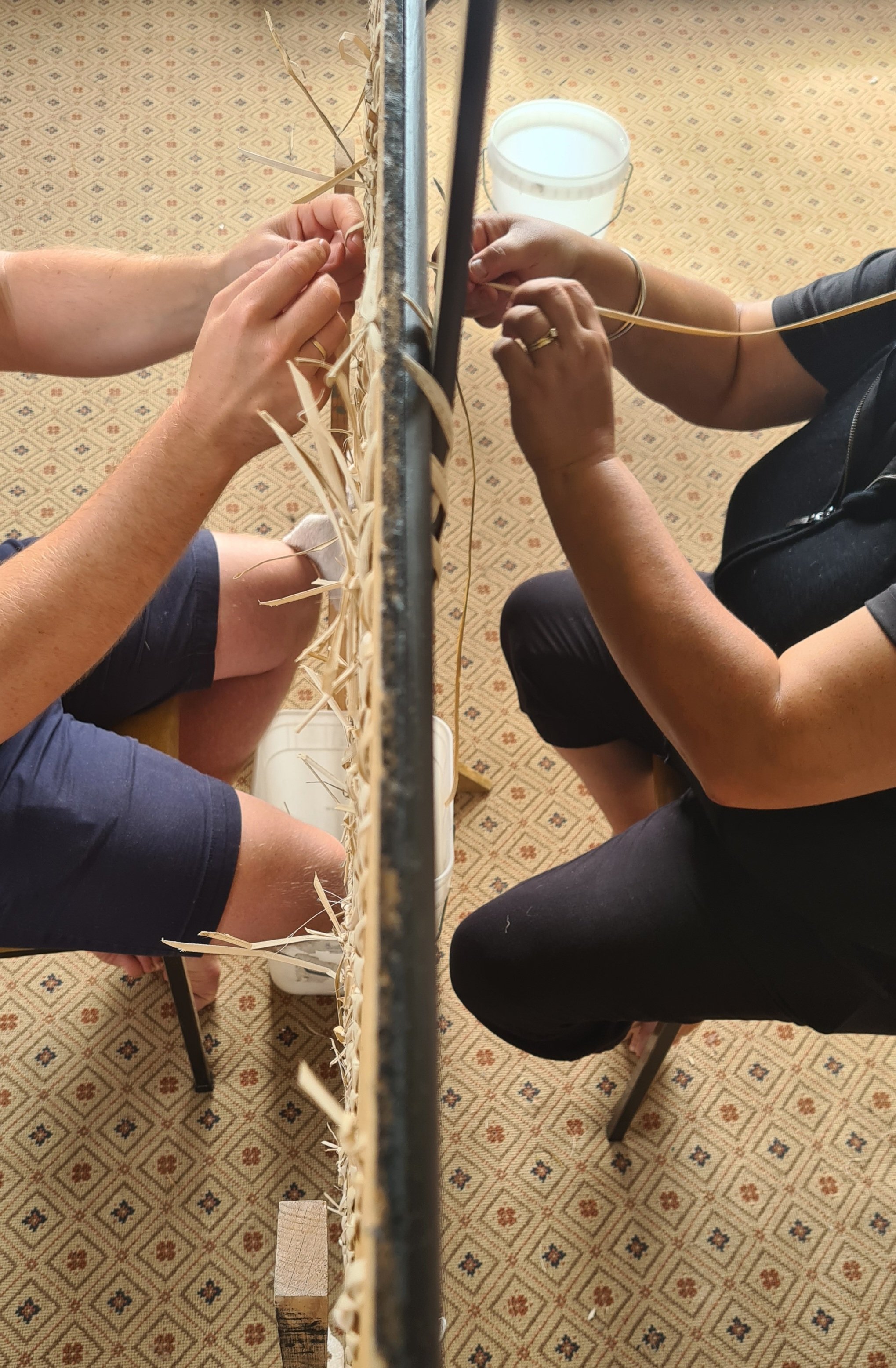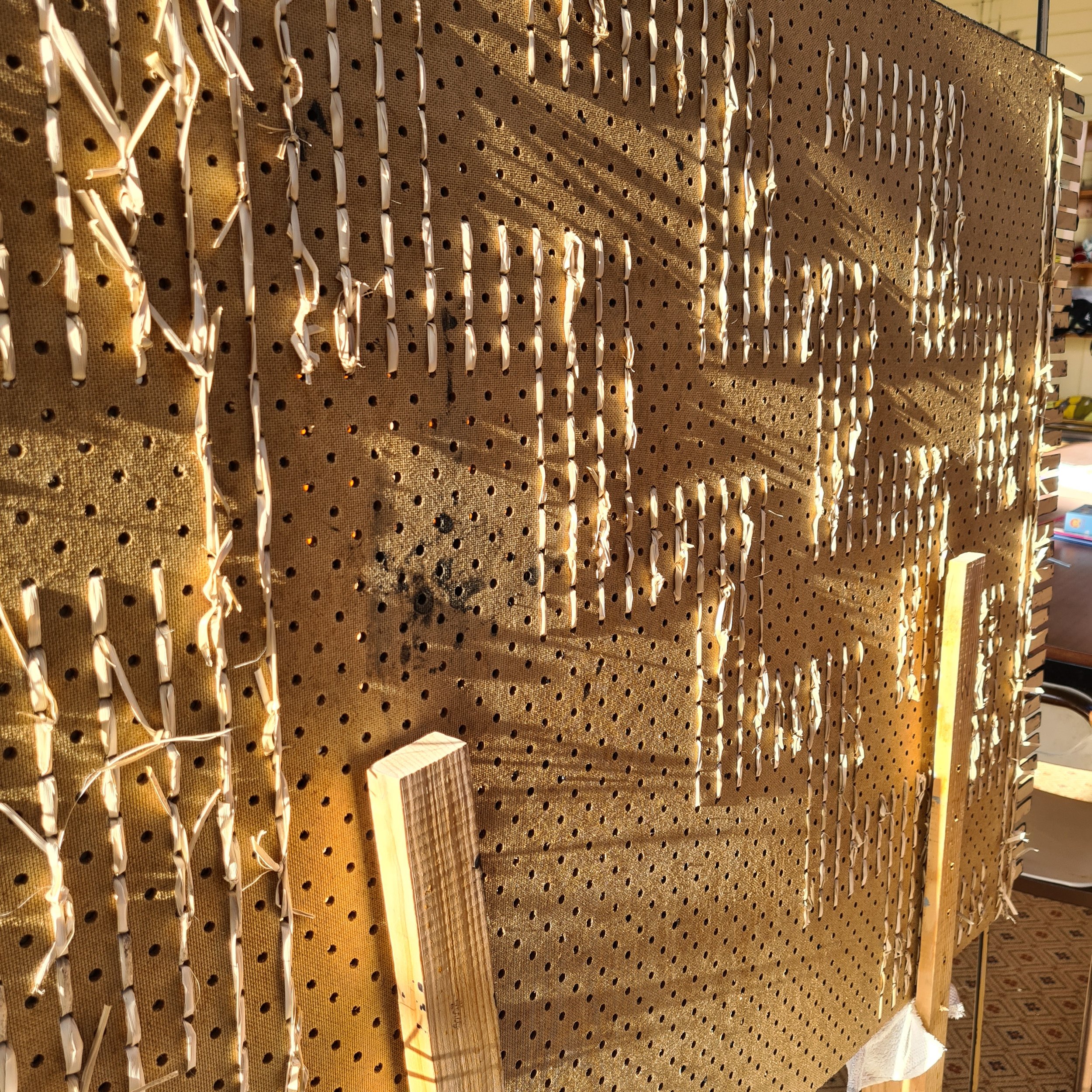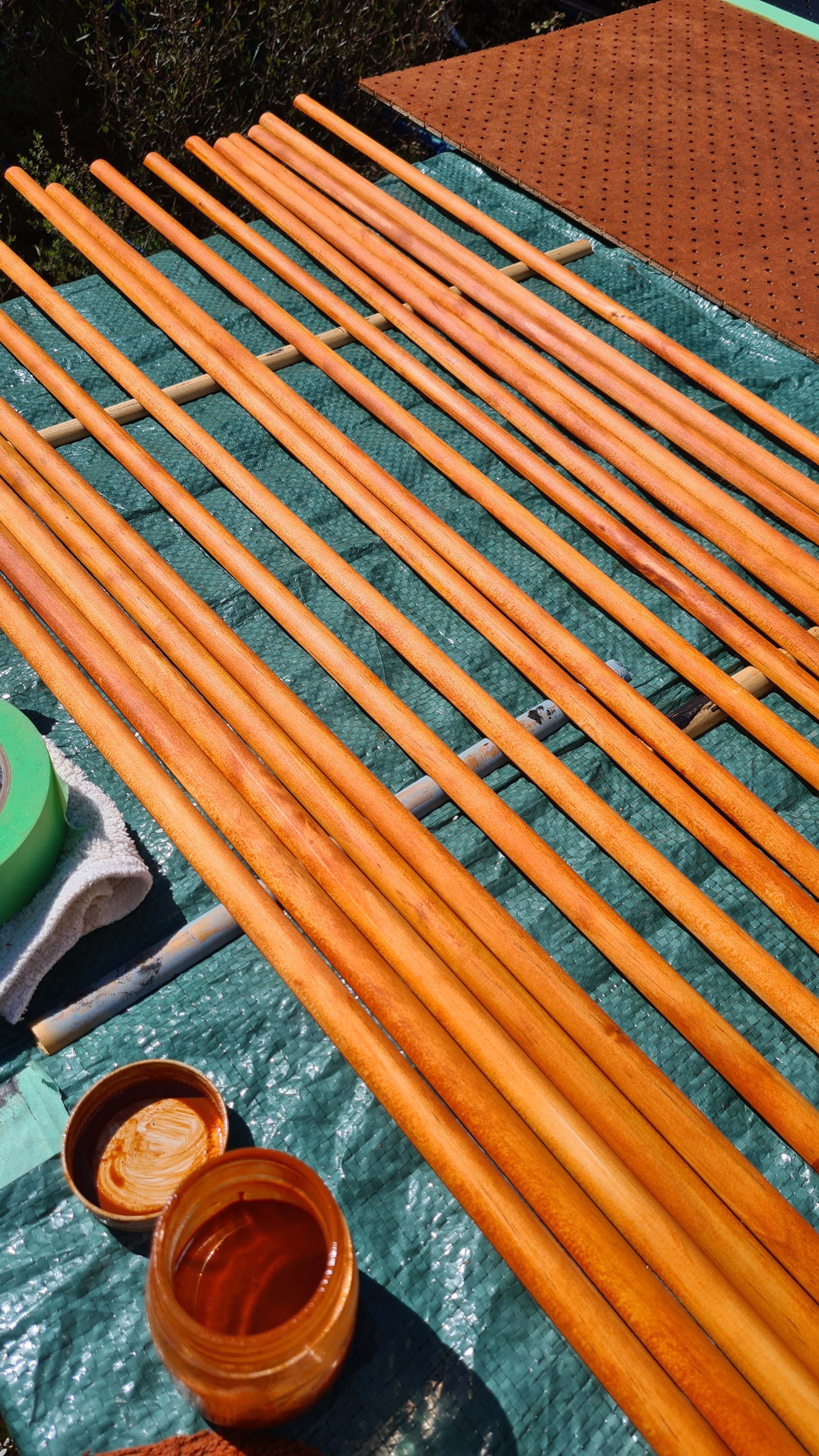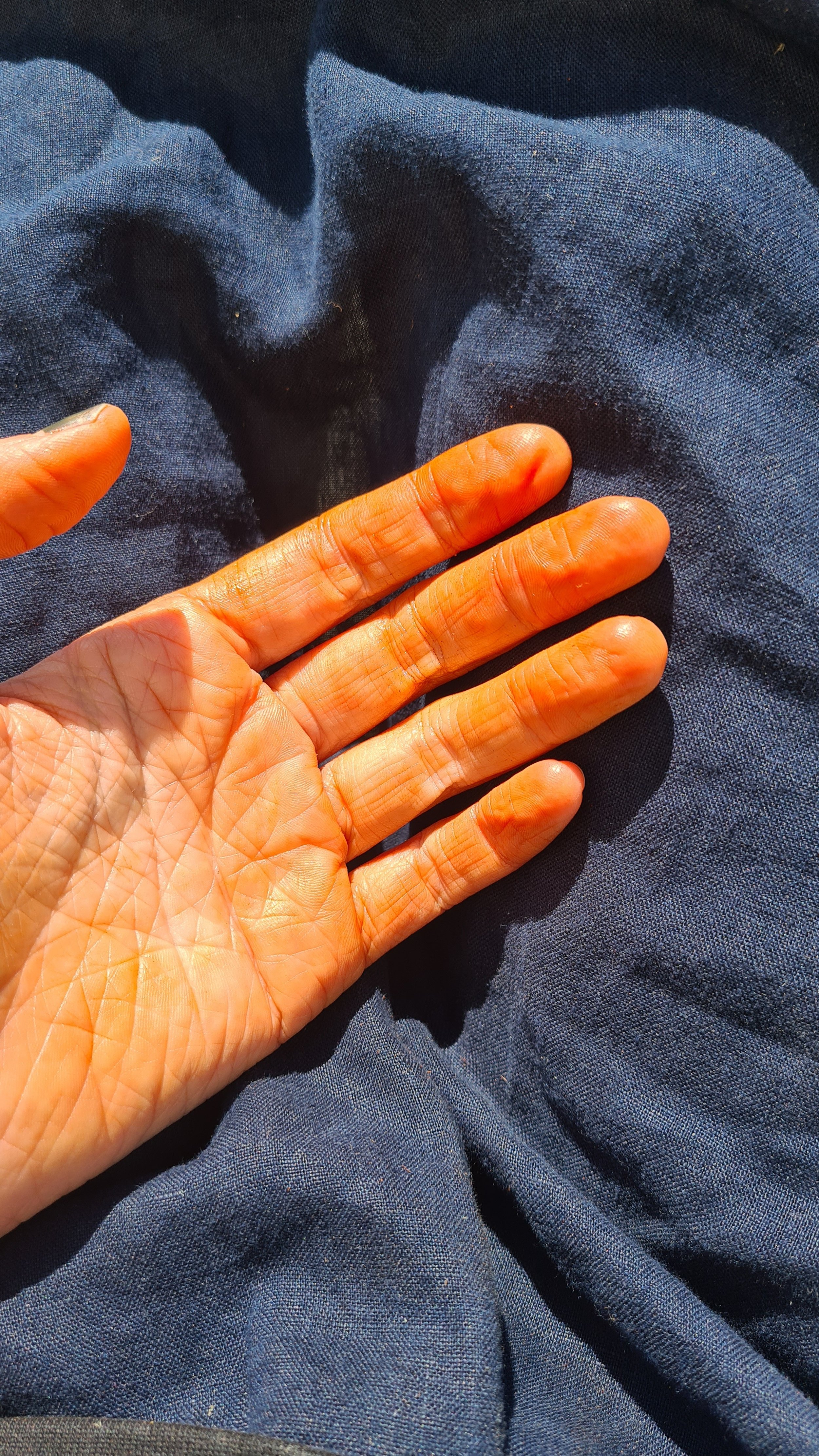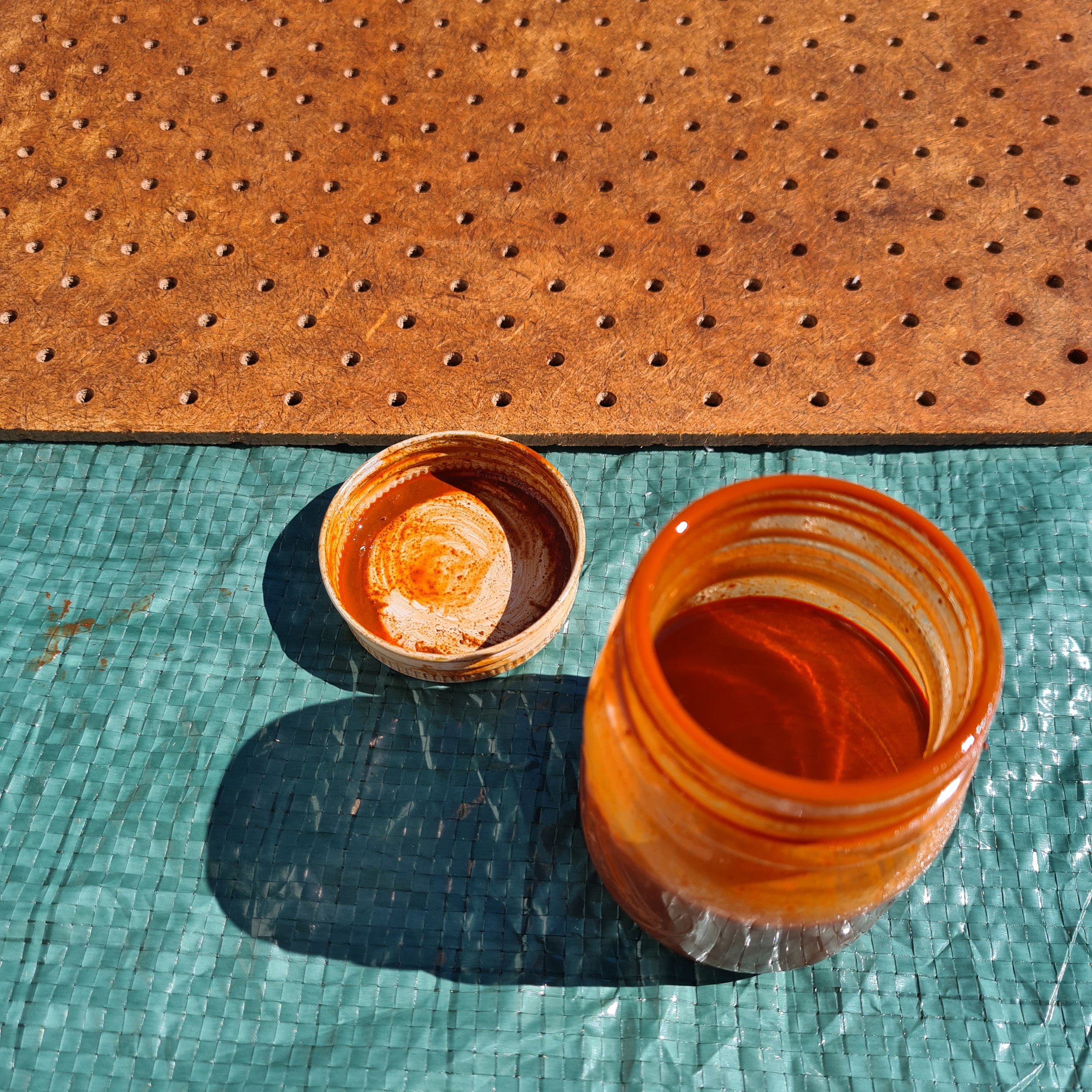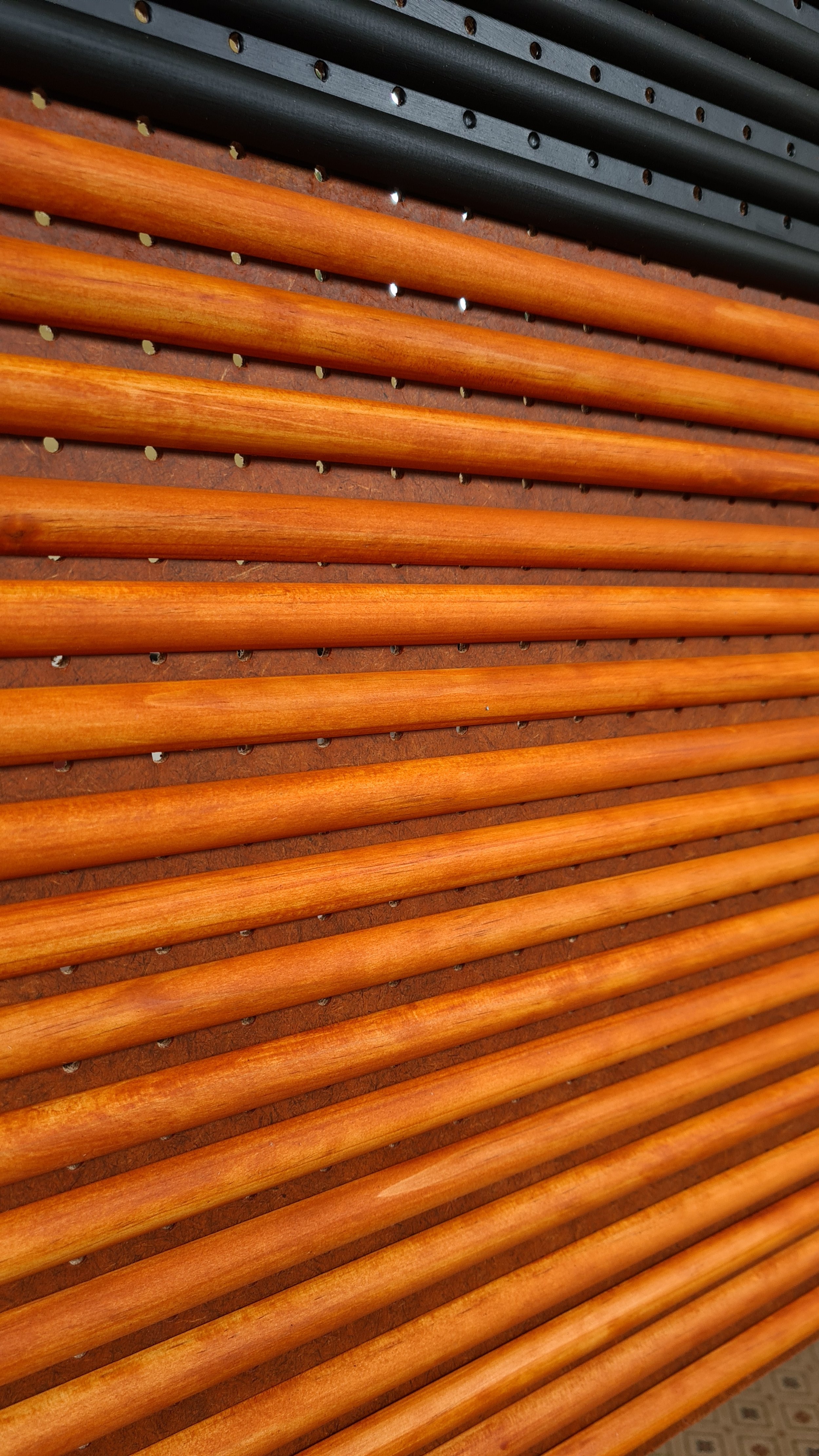
Turning up
Bridget Reweti is an artist from Tauranga Moana living in Te Waipounamu.
With support from funding through Matantū Taonga, she shares her experience of living on someone else’s whenua with Kauae Raro.
Writing and images by Bridget Reweti, November 2023
Somehow, I'm part of Whiria ka aho ki Puketeraki, a weaving group. And somehow they haven't kicked me out yet. This is surprising to me because despite having studied six years of Māori Visual Arts, being in Mataaho and asking Maureen Lander a lot of questions about all things whatu and rāranga, I can't really weave. I mean heck, if we really want to get into it I'm not even any good a bring a shared kai. But the aspect that I feel most self-conscious about is, I’m not from Puketeraki.
In early 2021, my second summer of living in Ōtepoti Dunedin I was at my friend Jacinta Beckwith's (Ngāti Kahungunu, Ngāti Porou) house and saw a flyer on her fridge about tukutuku. She was heading out to Karitāne the following weekend to learn and make tukutuku panels. I'd studied tukutuku, used its conceptual grounding of two people working together as a metaphor for collective practice, read all about the patterns and asked my cousins to tāmoko my legs with them. But I'd never actually made tukutuku. So I invited myself along. And just kept turning up. An action that is not to be underestimated within te ao Māori.
Every second Sunday of the month, Jacinta and I would drive to Karitāne sometimes carpooling with Adam Keane (Kai Tahu) or Rauhina Scott-Fyfe (Kāi Tahu, Kāti Māmoe, Waitaha, Kāti Pākehā). We processed kiekie, dyed it and made individual sampler boards so we could make mistakes now and not on the big ones. After a few months Suzi Flack (Kai Tahu) showed us the plan for the three big panels we would all be working on together. One of them would represent Papatūānuku and with the lower half painted orange. I talked to Suzi afterwards, wondering if she'd like to use kōkōwai to paint it. I explained that the year before I'd come out to Huriawa with Ayesha Green (Ngāti Kahungunu, Kai Tahu) and we'd met with rūnaka manager Suzanne Ellison (Kati Huirapa Runaka ki Puketeraki) who had showed us where to collect some from. That was probably my third time walking the land with an eye in for earth pigments. The first was with Sarah Hudson (Ngāti Awa, Ngāi Tūhoe, Ngāti Pūkeko), her daughter and my Mum around Ōhiwa harbour and the second was around my maunga Mauao.
On Huriawa I had whispered a karakia and we started digging around. We found a deposit that was rich and deep in colour, with some parts crumbly and others holding together like a crayon. Ayesha who has whakapapa to this area asked if I wanted to take some, and I was pretty hesitant. I hadn't come with that intention. But I thought if there was a time to accept kōkōwai from a different rohe, this is it. It felt like an extending hand of trust. And although it's difficult to comprehend, as manuhiri sometimes you just have to receive and accept. That's what a good guest does. There is of course, the responsibility to do right by it. A connection formed that will be made stronger with reciprocity.
That little piece of kōkōwai sat on my studio desk for almost a year, until the opportunity came along where it could be returned, in paint from, to where it had come from. I ground it up and mixed it with linseed oil to bring out to the next Sunday tukutuku. I spent the day in the sun painting the dowels and tukutuku boards, leaving the remaining kōkōwai paint in te whare pora, the school house weaving room. It felt good to be able to bring it back like this. I felt like a conduit, a cog in the wheel, part of an ever reciprocal bigger whole.
We've almost finished the tukutuku. And now I’m practicing my whāriki and rope making skills for our next project. The weavers still don't seem to care that I'm not from here. Because I guess in similar to my own marae you just gotta turn up. Turning up means being in relationship with people, and in relationship with the land.


